Sand and gravel are in demand. Over 240 million tons are mined in Germany every year. Dredged in 2600 sand and gravel pits. We visited a company near Bremen.
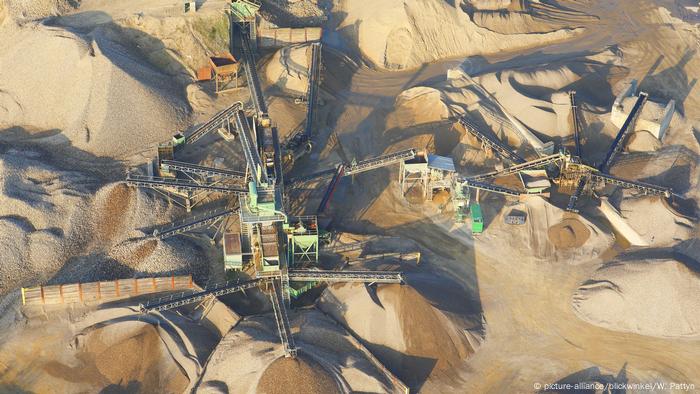
Sand and gravel quarrying in a mine in Belgium
An angular, all-terrain vehicle, 20 years old, spartan interior, wide tires is parked in the yard of the Neuenkrug sand trade. Jan von Oesen calls the Land Rover his sandpit car. “We're going to the Hulseberg pit now, it's ten or 15 minutes from here.” Jan von Oesen runs the company in Hambergen near Bremen. In 1992 he entered the business. “We have ten employees and five to six temporary workers.” Eight trucks bring the sand from the company's three sand pits to the customers.
High consumption of sand and gravel
Sand and gravel are always needed. And in large quantities. 200 tons for a single-family home, 30,000 tons for a kilometer of motorway. Every year, 270 million tons are extracted from gravel lakes and sand pits in Germany. Sandhandel Neuenkrug makes it to 150,000 tons. A small business. But Jan von Oesen shares the problems with the bigger players in the industry.
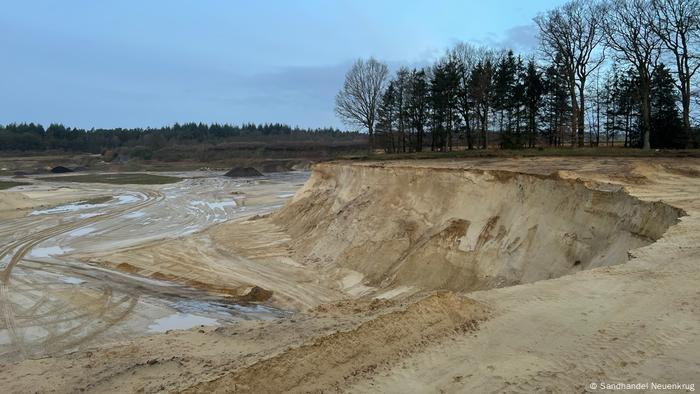
A view of the sand pit in Huelseberg
“The fact is that we're still looking ten years ahead; nevertheless, in two or three years we'll have to start thinking again about how and where things will go from there.” He has heard from colleagues who sometimes had to wait ten years for mining permits. “That also makes the raw material scarce.” Germany is richly blessed with sand and gravel, confirms Harald Elsner. The geologist works in Hanover for the Federal Institute for Geosciences and Natural Resources. “The reserves are sufficient for several tens of thousands of years of production, if we were to get to all the areas and wanted to sand and gravel everything.”
What would have to change
Germany is a densely populated country: villages and towns, nature and landscape protection areas, military spear zones, airports, motorways, railway lines. There are also fields and pastures. 50 to 70 percent of the sand and gravel deposits cannot be reached. Elsner recently published a study for the Federal Institute for Geosciences and Natural Resources. He visited 270 mining companies throughout Germany. Wherever new pits are to be opened up, he has been told in many places, the local residents usually get angry. What should I do? “Only representatives of public interests should be allowed to sue, not every citizen.” The number of staff in the approval authorities would also have to be increased significantly. On his round trip in Brandenburg, Harald Elser saw companies that work without a valid permit. “Only one clerk is responsible for the entire federal state.”
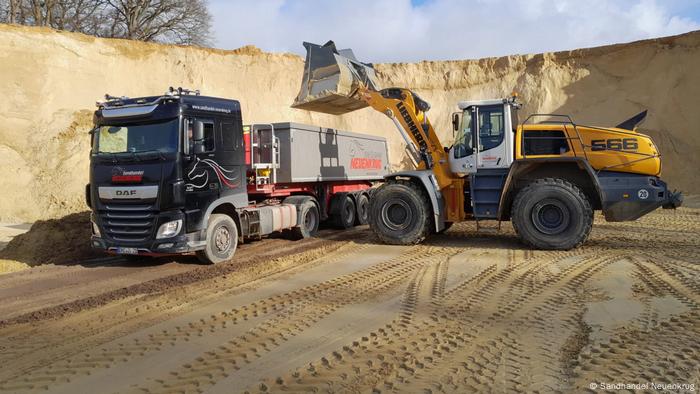
One of eight trucks transporting the sand from the Hulseberg pit
Jan von Oesen has now reached the sand pit. The hollow is 20 hectares in size. Ten hectares are already being backfilled and recultivated. “At this corner, where we are now, we have clean sand, so-called anti-freeze sand, which is mainly used in public road construction.” A four-wheel drive truck reverses towards the pit wall. The piece costs 150,000 euros, the vehicles last a maximum of seven years, after which a new one is needed. The company owns four wheel loaders – monstrous machines, twice as expensive as a truck, and up to four cubic meters fit in a shovel. In addition to the frost protection sand, Jan von Oesen explains, there is also filling sand with a higher proportion of clay in the pit. “We don't have gravel, you won't find gravel here in the North German Plain. It only starts south of Hanover.”
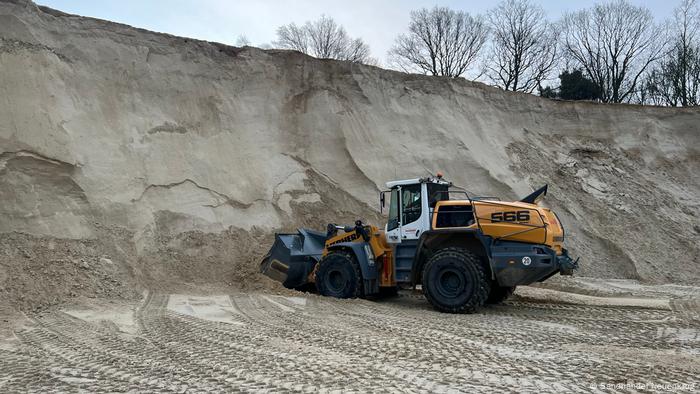
Wheel loader in the sand pit in Huelenberg
Sand, gravel, stones, boulders – the differences
There is sand with a grain size of zero to two millimeters, everything that is coarser-grained up to 63 millimeters is called gravel. Stones are sifted out, boulders put aside and used in gardening and landscaping. Sand occurs primarily in the North German Plain, where during the ice ages the constantly advancing glaciers deposited masses of debris from Scandinavia and the terminal moraines crushed the ground. Gravel is more likely to be encountered near mountains and rivers, such as in the Munich gravel plain. Quartz sand, which is in demand by the glass and ceramics industry, is significantly older in geological terms. Jan von Oesen does not offer quartz sand, but does offer a special sand for riding arenas. “The riding sand is sieved several times. There shouldn't be any stones or lumps of clay in it, it has to be a homogeneous material.”
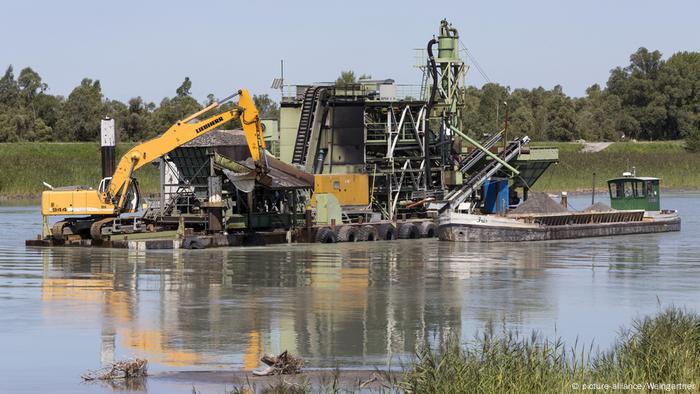
A floating installation on the Rhine for gravel mining
Sand is extracted here by dry mining. If suction dredgers transport the sand below the groundwater level, this is referred to as wet mining. The wheel loaders dig up to 18 meters deep into the ground in the sand pit shell mountain. A truck drives slowly into the pit – a non-company vehicle that looks Jan von Oesen immediately. The driver controls the area that has already been sent out. “Here, soil from construction sites is filled in, and the whole thing is strictly checked by the district.” Before the first truck is allowed to unload in the pit, a soil report must be sent to the district and checked. There were also strict requirements for the access road to the pit. “We had to build a 200-meter paved track to allow the tires to clean themselves before the trucks hit the public road.” Dirty roads harbor a high risk of accidents. Jan von Oesen would be liable for this. There is a sweeper in the depot for emergencies.
Building rubble can be recycled
Because sand and gravel are becoming increasingly scarce, solutions are needed. Harald Elsner from the Federal Institute for Geosciences and Natural Resources advocates recycling. Construction waste and concrete would have to be crushed and used as a substitute for gravel. “But in southern Germany, recycling is often not worthwhile. Gravel is cheap there.” Instead of laboriously breaking up broken concrete, bricks, tiles and redstone and processing them into gravel substitutes, the material is often backfilled in abandoned pits in southern Germany. It's different in Northern Germany.
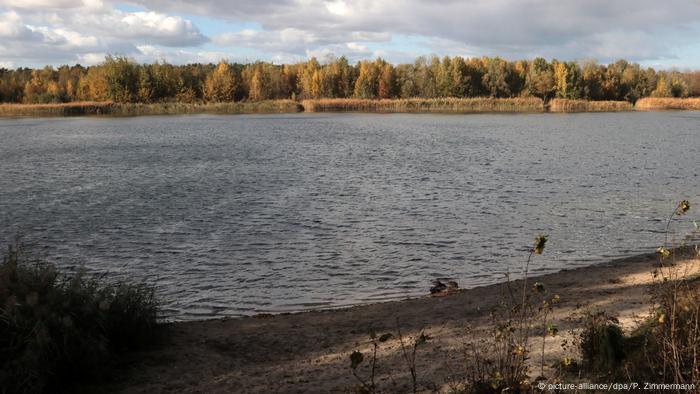
Renaturalized sand and gravel pit in the Berlin district of Kaulsdorf
< p>Jan von Oesen got into the recycling business 25 years ago and, together with a local construction company, bought a plant for crushing the material. The be-all and end-all is pre-sorting. “The material has to be delivered as cleanly as possible. Otherwise we have to sort it again manually before it goes through the crusher.” The crushed material can replace gravel as a base course in road construction. Gravel is expensive in northern Germany, much more so than in southern Germany where the raw material is plentiful. But the prices for sand are also rising – not only because of inflation and the energy crisis, but also because the supply varies greatly from region to region.
Not every mining company has had it as good as Jan von Oesen's company. The community recently gave his sand trade the green light to mine sand nearby. Here, too, not without conditions. He has to pay for the access road from the pit to the main road out of his own pocket. Jan von Oesen accepts it. Its operation is thus secured for the next ten to fifteen years. His son is also happy about that. Because soon the next generation will take over the command of the sand trade in Neuenkrug.